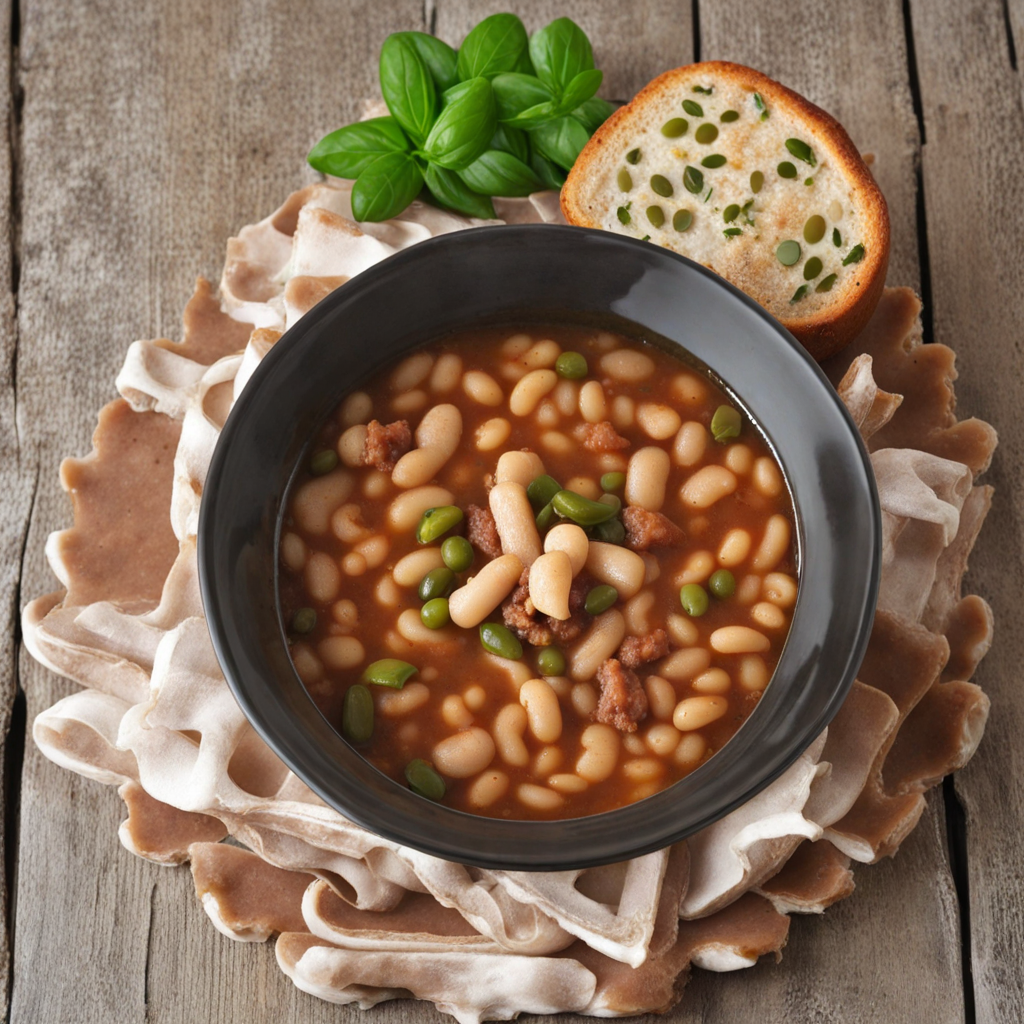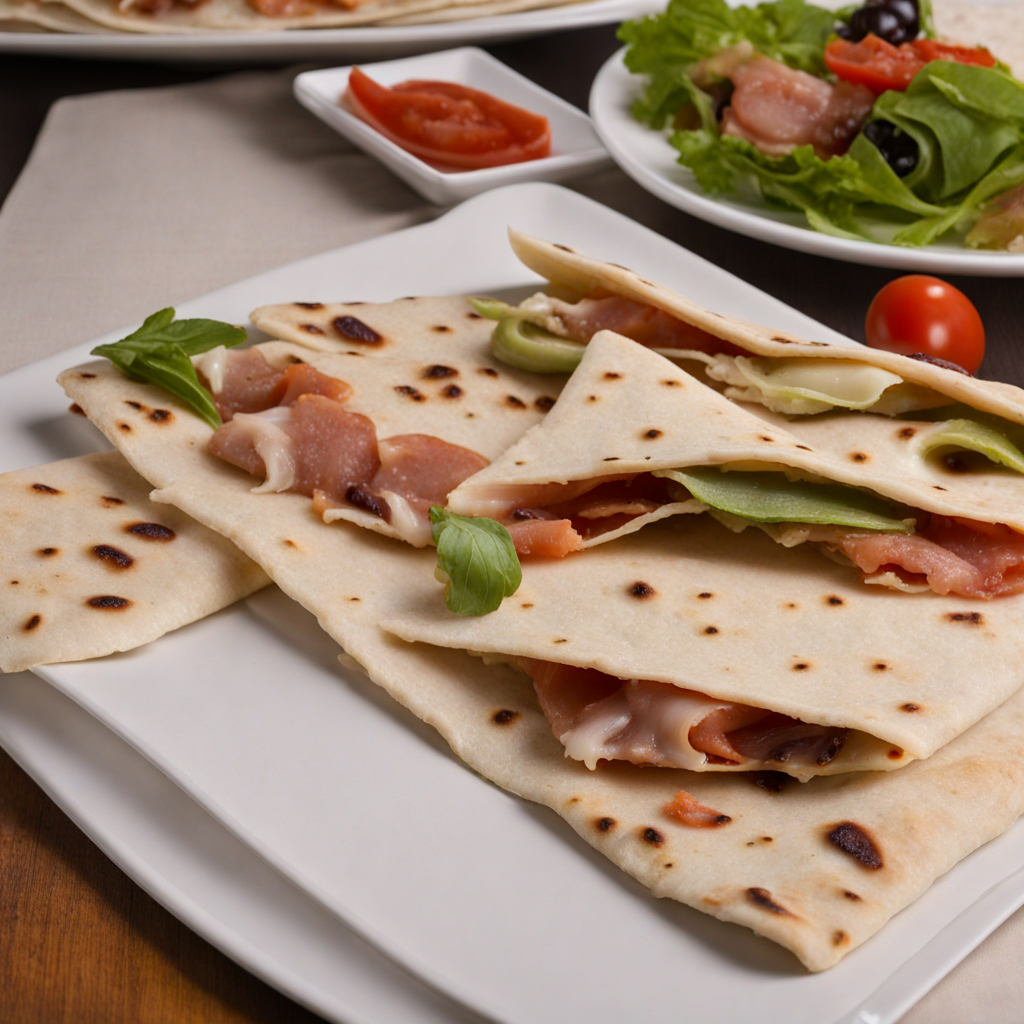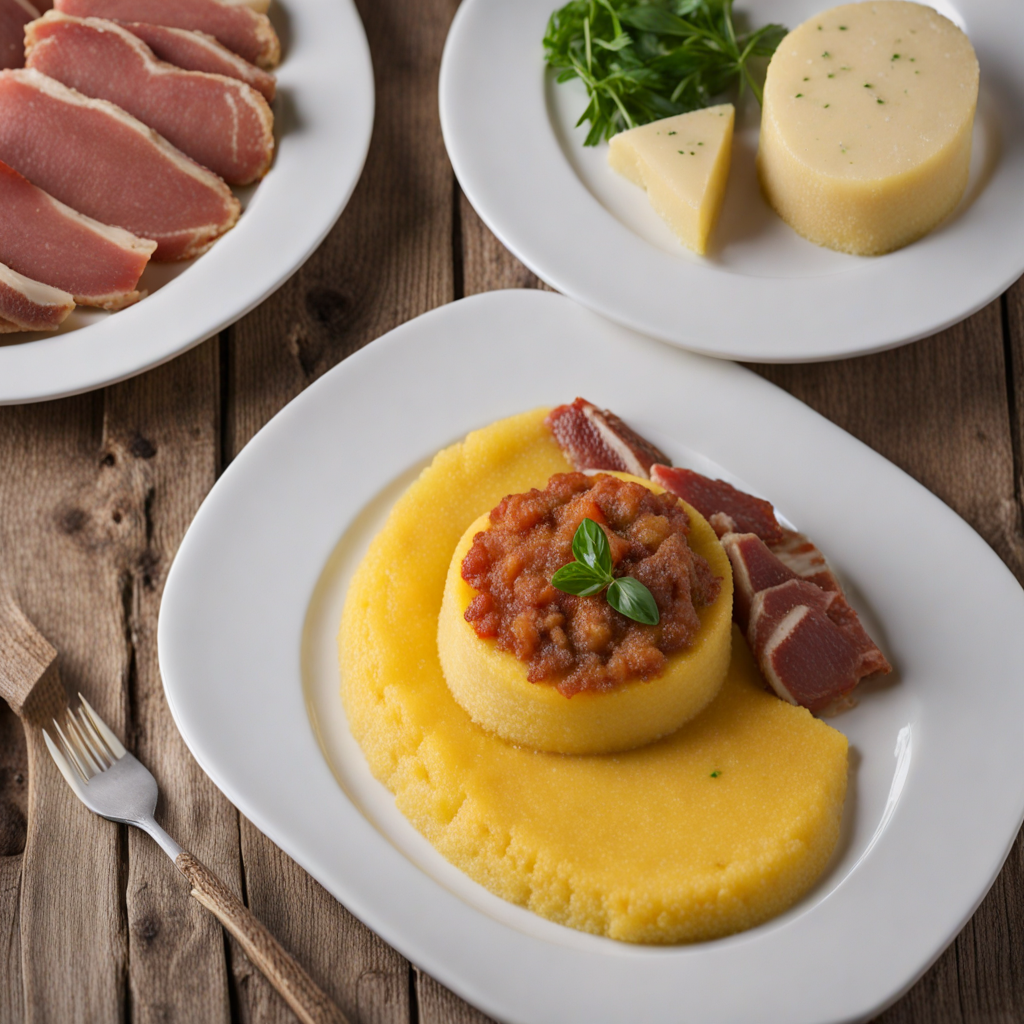Faggioli con le cotiche
Faggioli con le cotiche is a traditional dish from San Marino that beautifully showcases the region's rustic culinary heritage. At its core, this dish features fagioli, or beans, which are typically slow-cooked to achieve a creamy, tender texture. The beans are usually a variety such as borlotti or cannellini, known for their rich flavor and ability to absorb the essence of the ingredients they are cooked with. The dish is often enhanced with a medley of aromatic herbs, garlic, and onions, creating a savory base that elevates the humble beans into a comforting, hearty meal. What sets Faggioli con le cotiche apart is the addition of cotiche, which are the skin or rind of pork, often sourced from local farms. This ingredient adds a unique, robust flavor and a chewy texture that contrasts beautifully with the softness of the beans. When cooked together, the cotiche release their rich, fatty essence, infusing the beans with a depth of flavor that speaks to the heart of San Marino's culinary traditions. The dish is often served with a drizzle of high-quality olive oil, which enhances the overall taste and adds a touch of freshness. This dish is not only satisfying but also represents the simplicity and authenticity of Sammarinese cuisine. It is typically enjoyed as a main course, often paired with crusty bread to soak up the flavorful sauce. Faggioli con le cotiche embodies the concept of "cucina povera," or poor cuisine, which emphasizes using available ingredients to create hearty meals that nourish the body and soul. For those seeking to explore new flavors, this dish offers a delightful blend of textures and tastes that is both comforting and unforgettable.
How It Became This Dish
Faggioli con le Cotiche: A Culinary Tradition from San Marino Origins: The Roots of Faggioli con le Cotiche Faggioli con le cotiche, a traditional dish from the Republic of San Marino, is a heartwarming testament to the region's rich culinary heritage. This rustic dish, which translates to “beans with pork rind,” embodies the simplicity and resourcefulness of peasant cooking that has characterized the Italian peninsula for centuries. The dish’s roots can be traced back to the agrarian lifestyle that has long defined San Marino, a small, landlocked microstate surrounded by Italy. The cultivation of beans, particularly the local variety known as “faggioli,” has been integral to the diet of the Sammarinese people since ancient times. Beans are nutritious, versatile, and easy to grow, making them a staple food in many rural Italian communities. Coupled with cotiche, or pork rind, a byproduct of pig farming that was common in the region, this dish highlights the practice of using every part of an animal, a fundamental principle in traditional cooking. Historically, pigs were raised in San Marino not only for their meat but also for their fat, which was essential for flavoring dishes and preserving food. The practice of cooking with cotiche likely emerged from necessity; during times of scarcity, families learned to make hearty meals from what they had available. As such, faggioli con le cotiche can be seen as a dish born out of frugality, yet it evolved into a beloved symbol of comfort and tradition. Cultural Significance: More Than Just a Meal Faggioli con le cotiche is more than just a culinary delight; it is deeply embedded in the cultural fabric of San Marino. The dish is often associated with family gatherings, celebrations, and festivals, serving as a reminder of the importance of communal eating in Sammarinese culture. Sharing a pot of faggioli con le cotiche brings people together, fostering a sense of community and belonging. The dish also plays a significant role during traditional events and holidays. For instance, it is commonly prepared during the autumn harvest season, when families come together to celebrate the fruits of their labor. The preparation of faggioli con le cotiche can be a communal activity, with family members gathering to cook and share stories, reinforcing familial bonds and passing down culinary traditions to younger generations. Moreover, the dish is often featured in local festivals, such as the “Festa del Fagiolo” (Bean Festival), which celebrates the region’s agricultural products. At this event, visitors can sample various bean dishes, with faggioli con le cotiche as a highlight. This celebration not only showcases the dish but also emphasizes the significance of local agriculture in sustaining the community and preserving traditional practices. Development Over Time: A Journey Through History The evolution of faggioli con le cotiche reflects broader changes in society, agriculture, and culinary practices over the centuries. Initially, the dish was prepared simply, with beans simmered slowly with pork rind and flavored with local herbs and spices. As the region developed and trade routes expanded, new ingredients and techniques began to influence the preparation of the dish. In the 19th century, with the advent of industrialization and urbanization, many rural families migrated to cities in search of work, leading to changes in dietary habits. While faggioli con le cotiche remained a staple in many households, urban dwellers often sought convenience in their food. This shift led to the introduction of canned beans and pre-packaged pork products, which altered the way the dish was prepared. However, many families continued to honor traditional recipes, ensuring that the dish retained its rustic charm. By the late 20th century, there was a resurgence of interest in traditional and artisanal foods, driven by a growing appreciation for local and sustainable cuisine. Chefs and home cooks alike began to rediscover the importance of cooking with seasonal and regional ingredients. In this context, faggioli con le cotiche experienced a renaissance, as culinary enthusiasts sought to revive and modernize the dish while respecting its origins. Contemporary interpretations of faggioli con le cotiche still pay homage to the traditional preparation methods but often incorporate new flavors and techniques. Some chefs experiment with the addition of vegetables, such as carrots or celery, to enhance the dish's nutritional profile. Others explore variations in the type of beans used, highlighting the diversity of legumes available in the region. These adaptations reflect a broader trend in Italian cuisine, where chefs blend tradition with innovation to create exciting new dishes while celebrating their culinary heritage. Modern Day: Faggioli con le Cotiche in Contemporary Cuisine Today, faggioli con le cotiche continues to be cherished in San Marino and beyond. It is a dish that not only nourishes the body but also connects people to their history and culture. In local trattorias and restaurants, visitors can savor this traditional dish, often accompanied by a glass of Sammarinese wine, such as Rosso di San Marino, which complements the flavors of the beans and pork rind beautifully. The resurgence of interest in traditional foods has also led to the establishment of cooking classes and workshops focused on Sammarinese cuisine, where participants can learn the art of preparing faggioli con le cotiche from local chefs. These experiences allow both locals and tourists to engage with the culture on a deeper level, fostering a sense of appreciation for the culinary traditions that have shaped San Marino. In conclusion, faggioli con le cotiche is more than just a dish; it is a celebration of San Marino’s agricultural heritage, communal values, and culinary evolution. From its humble origins in peasant kitchens to its place on the tables of modern restaurants, this dish encapsulates the spirit of the Sammarinese people—resilient, resourceful, and deeply connected to their land and traditions. Whether enjoyed at home or in a bustling trattoria, faggioli con le cotiche remains a flavorful reminder of the past, a dish that continues to bring people together, one hearty bowl at a time.
You may like
Discover local flavors from San Marino







